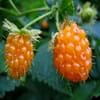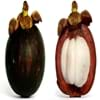Health Benefits
Cancer prevention, Improves stomach health, Weight loss properties
Cancer prevention, Heart care, Increases metabolic rate, Strengthening of bones, Treatment of skin Diseases
General Benefits
Anti oxidant properties, Digestive aid, Eye care, Healing of wounds, Improves eye vision, Maintains healthy cholesterol level, Strengthens bones
Anti oxidant properties, Boosts immune system, Digestive aid, Eye care, Improves blood circulation, Sore throat treatment
Skin Benefits
Anti-aging benefits, Reduces wrinkles
Anti-aging benefits, Reduces wrinkles, Skin rejuvenation, Treatment of skin diseases
Hair Benefits
Protects hair, Regulates hair growth
Protects hair
Allergy Symptoms
Abdominal pains, Itching, Swelling of mouth, tongue or lips
Abdominal pains, Coughing, Diarrhea, Itching, Runny nose, Sneezing, Swelling of mouth, tongue or lips, Wheezing
Side Effects
Allergic reaction
Allergic reaction
Best Time to Eat
Best if taken as a breakfast (or empty stomach), As a snack in the late afternoon, Don't eat after meal, Morning time (before lunch)
Best if taken as a breakfast (or empty stomach), As a snack in the late afternoon, Don't consume at night and before bed, Eat the fresh ones, avoid mixing with any other foods, don't eat after meal., Morning time (before lunch)
Vitamin A (Retinol)
Not Available
Vitamin B5 (Pantothenic Acid)
Not Available
Vitamin B6 (Pyridoxin)
Not Available
Vitamin B9 (Folic acid)
Not Available
Vitamin C (Ascorbic Acid)
Vitamin E (Tocopherole)
Not Available
Vitamin K (Phyllochinone)
Not Available
Calories in Fresh Fruit with Peel
Calories in Fresh Fruit without Peel
Not Available
Not Available
Calories in Frozen Form
Not Available
Not Available
Calories in Dried Form
Not Available
Not Available
Calories in Canned Form
Not Available
Not Available
Season
All seasons
Summer
Varieties
Golden ruby and Olympic Double
Dwarf Huckleberry, Cascade Huckleberry, Mountain huckleberry and Blackwinter Huckleberry
Color
Pink, Pink red, Salmon, Salmon yellow
Blue, Purple, Purplish black
Origin
North America
North America
Grows on
Trees
Not Available
Soil Type
Loam
Loamy, Sandy, Well-drained
Climatic Conditions
Moist
Humid, Warm
Facts about
- The name salmon berry is due of the resemblance with 'salmon roe'.
- In 1 kg of fruit, there are total 315,250 seeds.
- Salmon berry tree leaves act as an excellent replacement for tea.
- "I'm your huckleberry" is a way of saying that one is just the right person for a given job.
- The phrase "a huckleberry over my persimmon" was used to mean "a bit beyond my abilities".
Spirits
Not Available
Yes
Cocktails
Not Available
Yes
Top Producer
United States of America
United States of America
Other Countries
Canada, Mexico
Canada
Top Importer
Not Available
Canada
Top Exporter
Not Available
Chile
Botanical Name
Rubus spectabilis
Gaylussacia brachycera
Synonym
Not Available
Not Available
Subkingdom
Tracheobionta
Tracheobionta
Division
Magnoliophyta
Magnoliophyta
Class
Magnoliopsida
Magnoliopsida
Subclass
Rosidae
Asteridae
Family
Rosaceae
Ericaceae
Species
R. spectabilis
G. brachycera
Generic Group
Not Available
Heath
Difference Between Salmonberry and Huckleberry
We might think that Salmonberry and Huckleberry are similar with respect to nutritional value and health benefits. But the nutrient content of both fruits is different. Salmonberry and Huckleberry Facts such as their taste, shape, color, and size are also distinct. The difference between Salmonberry and Huckleberry is explained here.
The amount of calories in 100 gm of fresh Salmonberry and Huckleberry with peel is 47.00 kcal and 37.00 kcal and the amount of calories without peel is Not Available and Not Available respectively. Thus, Salmonberry and Huckleberry belong to and category.These fruits might or might not differ with respect to their scientific classification. The order of Salmonberry and Huckleberry is Rosales and Ericales respectively. Salmonberry belongs to Rosaceae family and Huckleberry belongs to Ericaceae family. Salmonberry belongs to Rubus genus of R. spectabilis species and Huckleberry belongs to Gaylussacia genus of G. brachycera species. Beings plants, both fruits belong to Plantae Kingdom.









